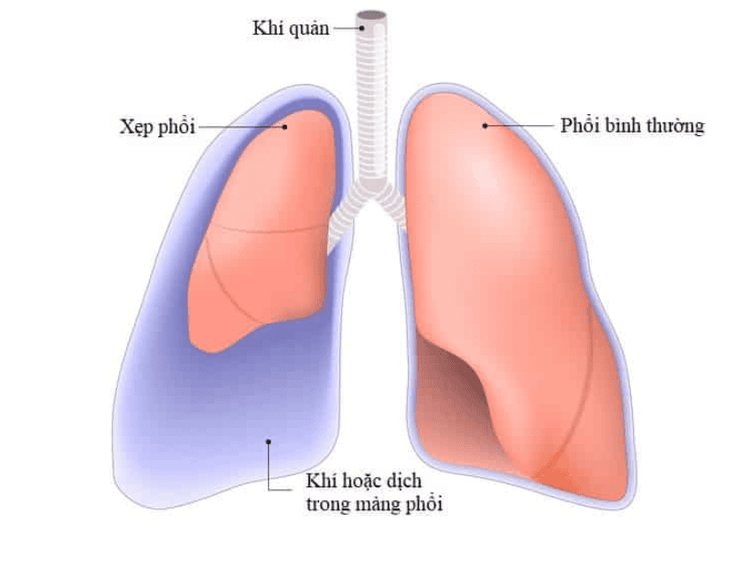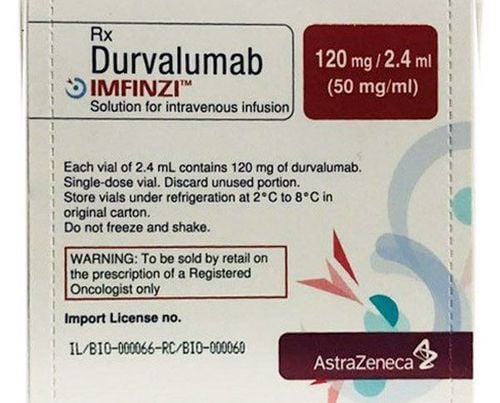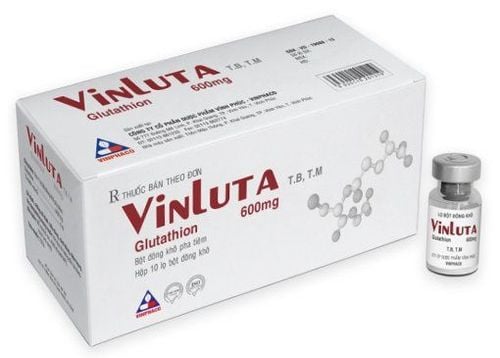This is an automatically translated article.
The article is professionally consulted by Master, Doctor Le Hong Chien - Doctor of Radiology - Intervention - Department of Diagnostic Imaging and Nuclear Medicine - Vinmec Times City International General Hospital. The doctor has many years of experience working in the field of diagnostic imaging and interventional radiology (endovascular intervention and extravascular intervention).Radiofrequency ablation of malignant lung tumors is a new technique in treatment that has been successfully implemented in many hospitals, providing a good prognosis for patients with lung cancer. According to statistics, most patients respond well to this new treatment technique.
1. How is radiofrequency ablation of lung tumors?
Radiofrequency ablation of lung tumors with RFA is a new treatment method, which is expected to help treat the disease effectively, less invasively and especially without causing pain to the patient. In fact, the RFA method has been very popular when treating thyroid nodules and some other diseases such as uterine fibroids, liver tumors...High frequency (RF) waves are waves with wavelengths from 3 kHz to 300 GHz.
First applied in burning liver tumors when liver transplantation and tumor resection cannot be performed. Recently, radiofrequency has been used to ablate lung tumors that are inoperable due to medical disease or late stage.
This is a minimally invasive procedure compared to surgery in the treatment of malignant lung tumors, which reduces mortality and complications, and improves patient survival.
2. Indications and contraindications for radiofrequency ablation of lung tumors

Non-small cell tumors that cannot be operated on because of medical disease or are too indicated. stage IIIB and IV surgery or the patient refuses surgery [1, 3, 4, 6]. Lung tumors that persist after radiation and chemotherapy or new tumors that appear after surgery [1]. Secondary lung tumor: from colon cancer [7], kidney or liver... Ideally, Tumor < 3-3.5cm [1, 8]. 2.2. Contraindication to radiofrequency ablation of lung tumors Subjects are contraindicated to radiofrequency ablation:
Subjects with tumors less than 1cm from the bronchi, trachea and esophagus with atelectasis or pneumonia caused by Obstruction Patient with uncontrolled coagulopathy. Performance status of grade III or higher such as: in bed > 12 hours/day and needing care of others. Relative contraindications when the tumor is located near a major blood vessel.
3. High frequency lung tumor burning technique

In addition, it is necessary to stop using anticoagulants such as Heparin 1 day before, Warfarin before 5 days and antiplatelet drugs 3 days before the procedure. Finally, the patient needs to sign a written consent to the procedure.
3.2. Preparation for anesthesia and resuscitation Local anesthesia then put the patient to sleep intravenously Administer analgesia Continuous oxygen 6 liters/min Monitor heart rate and SpO2 by monitoring 3.3. Technical principles of high-frequency ablation of lung tumors Patient's thigh
Step 3: The radiofrequency generator is set to the appropriate parameters according to the size of the tumor as follows:
If the tumor is 2cm: set the temperature to 90 degrees Celsius, the power is 50W, the time is 10 minutes. If the tumor is 3cm: first push the electrode needle into 2cm, set the temperature to 90 degrees Celsius, power 50W, time 15 minutes. When 90 degrees Celsius is reached, push the electrode needle into 3cm and burn it with a temperature of 90 degrees Celsius, 70W power, 15 minutes. If U 4cm: first push the electrode needle into 2cm, set the temperature to 90 degrees C, power 50W, time 20 minutes. When 90 degrees Celsius is reached, push the electrode needle into 3cm, set the temperature to 90 degrees Celsius, power 70W, time 20 minutes, burn at this temperature for 5 minutes. Then, push the needle into 4cm and burn at this temperature for 15 minutes. If U 5cm: first push the electrode needle into 2cm, set the temperature to 90 degrees C, power 50W, time 27 minutes. When 90 degrees Celsius is reached, push the electrode needle into 3cm, set the temperature to 90 degrees Celsius, capacity 70W, time 27 minutes, burn at this temperature for 2 minutes. Push the needle into 4cm, set the power to 90W and burn it at this temperature of 90 degrees C for 5 minutes. Finally, fill the needle barrel 5cm, set the power to 110W and burn at 90 degrees C for 20 minutes.
4. Follow-up after the procedure of burning lung tumors with high-frequency waves

Accordingly, the patient needs to lie on the side of the tumor, rest in bed for about 2 hours, then can be discharged after 1 day. Patients should combine with chemotherapy or radiation to achieve high efficiency.
4.1. Evaluation of treatment response after 1 month Tumor diameter reduced by >30% No contrast enhancement No new nodular lesions around the burned site If the tumor is still enhanced, radiofrequency ablation can be repeated for a second time [ten]. 4.2. Complications can occur during radiofrequency ablation of lung tumors. Mortality rate is about 0.4% Pneumothorax 30% (<10% requires drainage tube) Pleural effusion
10% Hemoptysis, subcutaneous emphysema and infection. Bleeding in the lung parenchyma is about 10% Worldwide, radiofrequency ablation has been used to successfully treat solid tumors of the lung, liver, kidney, thyroid, uterine fibroids, and bone. However, to ensure effectiveness, patients need to choose reputable medical facilities to perform this technique.
In addition to radiofrequency treatment, Vinmec currently treats lung tumors and lung diseases with many different methods and techniques. These are methods that require a high level of technical expertise of doctors with the support of modern machinery and equipment. After the procedure, the patient recovered quickly and left no sequelae.
Please dial HOTLINE for more information or register for an appointment HERE. Download MyVinmec app to make appointments faster and to manage your bookings easily.














